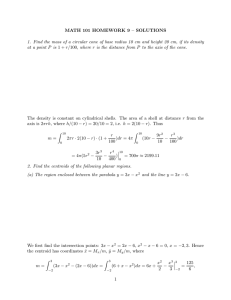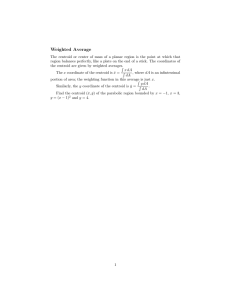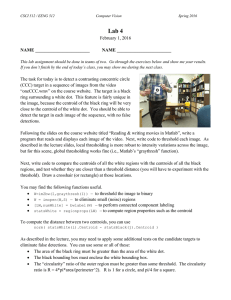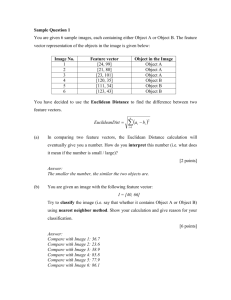Chapter 2_v1.doc
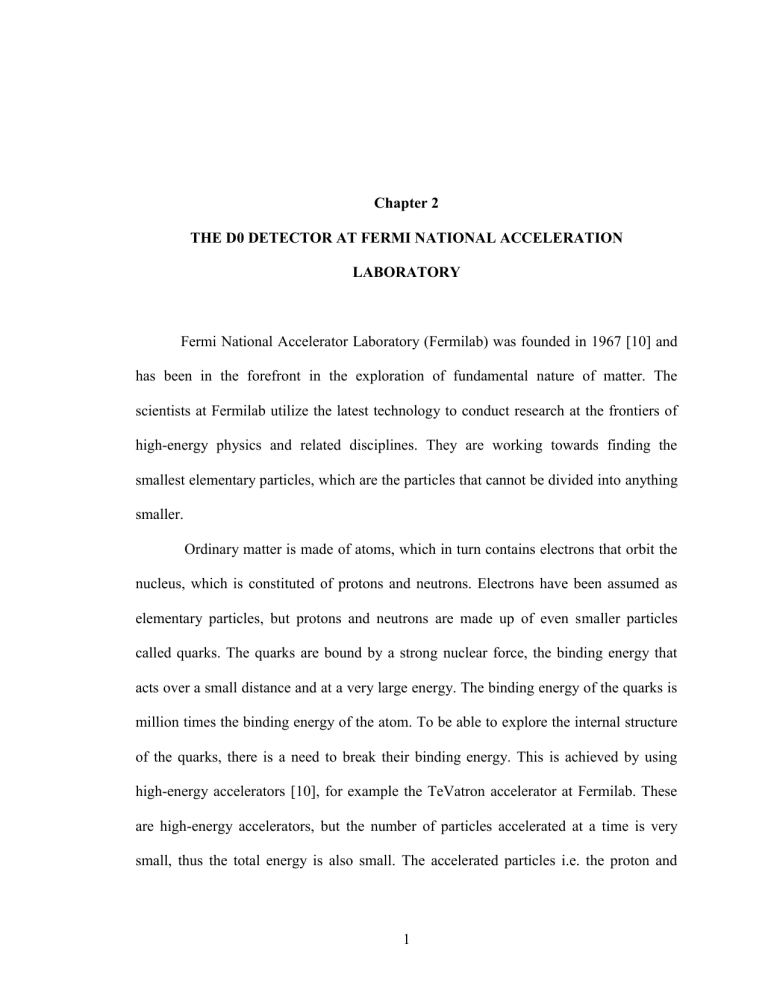
Shree ganeshayan namaha
Chapter 2
THE D0 DETECTOR AT FERMI NATIONAL ACCELERATION
LABORATORY
Fermi National Accelerator Laboratory (Fermilab) was founded in 1967 [10] and has been in the forefront in the exploration of fundamental nature of matter. The scientists at Fermilab utilize the latest technology to conduct research at the frontiers of high-energy physics and related disciplines. They are working towards finding the smallest elementary particles, which are the particles that cannot be divided into anything smaller.
Ordinary matter is made of atoms, which in turn contains electrons that orbit the nucleus, which is constituted of protons and neutrons. Electrons have been assumed as elementary particles, but protons and neutrons are made up of even smaller particles called quarks. The quarks are bound by a strong nuclear force, the binding energy that acts over a small distance and at a very large energy. The binding energy of the quarks is million times the binding energy of the atom. To be able to explore the internal structure of the quarks, there is a need to break their binding energy. This is achieved by using high-energy accelerators [10], for example the TeVatron accelerator at Fermilab. These are high-energy accelerators, but the number of particles accelerated at a time is very small, thus the total energy is also small. The accelerated particles i.e. the proton and
1
anti-proton are made to collide. This collision results in emission of the smaller particles that constitute the proton and anti-proton. To detect these emitted particles, Fermilab has two detectors on the TeVatron accelerator – the D0 detector and the CDF detector. These experiments have helped scientists to define the proton, a particle inside the atom’s nucleus and identify its constituents – the quarks. The first of the heavy quarks was bottom quark that was discovered in 1977 and more recent is the top quark that was discovered in 1995 [9]. The scientists predict that further study of the top quark may give clues about the mystery of why matter has mass. The top quarks are produced very rarely in the proton- anti-proton collision, thus to obtain a few positive events of top quark a few million events of the collision have to be scanned.
The D0 detector
The Silicon Track Card (STC) in the D0 detector electronics has been developed with the goal of finding events with top quarks. This goal will be achieved by finding the vertices of the particles in 3-dimensions with proper time resolution and fully reconstructing the decay chains [2]. The vertices are the points in space at which events occur. The primary vertex is the primary interaction point at which proton and anti-proton collide and produces new particles. The newly formed particles travel in space and then decay, such a point is called decay vertex or secondary vertex.
The detector has three levels of data acquisition and processing [7]. It uses different measurement techniques to help trace the decaying particles. These are calorimeter, fiber tracker, muon detector, pre-shower selectors and silicon detector chips.
2
p-bar p
L0
L0
Silicon
Trigger
Frame work
Fibers
10 kHz
1kHz
Pre-shower Muon
Calorimeter
L1
Trigger
L2 Preprocessors
Global L2 Stage
Buffers
L1
250kb/event
10-20Hz
L3
Processors
Tape
Figure 2.1 The flow of data in the D0 detector [D0 internal presentation].
The detector chips are silicon wafers made out as reverse biased p-n junctions and have aluminum strips for read out. They are located in the central region of the D0 trigger and are oriented in three different positions axial, stereo and z-axis. The axial position means
3
parallel to the axis of cylinder of the detector, the stereo position means inclined by about
2 degrees with respect to the axial direction and the z-axis position means the chips are perpendicular to the axial direction.
Level_1
This level obtains measurement values from the calorimeter, fiber tracker, muon detector and the pre-shower [2]. It takes 128 different combinations of these measured values and feeds them to a series of FPGAs. The FPGAs examine this data to determine if a specific L1 bit has been satisfied, to issue an accept signal, which acts as a trigger for
Level_2. This level helps to filter out the data, by giving a rough estimate of the group of tracks of the fiber-roads, through which the particle has passed, thus reducing the data to be processed by the next level by about 1000 times. This level runs at a frequency of 7.5
MHz.
Level_2
The trigger from Level 1 acts as a start signal for Level_2. The level runs are frequency of 5-10 kHz. The data from the silicon detector chips are digitized and passed on to Level_2. The digitization takes place in a full custom, mixed signal integrated circuit (SVX-II). These are hardwired directly to the detector. The charge, which is stored in terms of voltage across a capacitor, is digitized by the SVX-II to an 8 – bit word. Ten
SVX-II chips are connected to High Density Interconnect (HDI) that is copper flexible printed circuit. Four HDIs are further connected to a one section of the Port Card and each Silicon Acquisition and Readout module (SAR) has two Port Cards. Finally a
4
maximum of 16 SARs can be mounted on a VERSAmodule Eurocard (VME) crate.
Level_2 has eight VME crates around the detector. Thus Level_2 electronics has eight channels. Level_2 helps to locate a particular strip on the SVX-II chip through which the particle may have passed. The strip value from Level_2 and the fiber tracks from the
Level_1 are compared in this level to eliminate data due to any stray particles. Finally, sophisticated Digital Signal Processing (DSP) microprocessors in the Track Fit Card
(TFC) are used to run curve-fitting algorithms to find the decay chains of the emitted particles, top quarks in particular. Thus the data is further reduced by an order of 1000 times.
L1CTT SMT preprocess SMT data find clusters associate clusters with L1CTT tracks
L3 fit trajectories
L2CTT
Figure 2.2 Block diagram of the Level_2.
Level_3
This is the final level in the D0 electronics. This is a data acquisition level that acquires data from each module of the both Level_1 and Level_2. This data is transferred to VME Receiver Card (VRC) on fiber using low-level fiber channel hardware [2]. The data transfer takes place only after the Level_2 accept signal is issued. This level runs at
1000 Hz.
5
The electronics for main data path [18]
The main data path is a part of Level_2. It performs the functions of preprocessing the SMT data, finding clusters and to associate the centroids with the FRC tracks. It has three modules strip reader, centroid finder, and the hit filter. This level also has a storage module L3 buffers.
Strip reader
This is the front end of the data path. It has two sub-modules, SMT data filter and the strip reader control. It accepts the 8- bit SMT data from the VME bus at the rate of
53MHz. This data is filtered of excess “C0” – end of event markers. The filtered data is corrected after checking for bad strips and a second check for the gain and offset values for the individual strips. At the output the strip reader formats the data obtained in a 23bit word to be read by the centroid finder. The data is written into a 23-bit wide First In
First Out (FIFO) bank of registers at the rate of 32Mhz. The format of the 23-bit register is given in table 2.1 below.
Table 2.1 The 23-bit data at the output of the strip reader.
22..21
Data-type
20
New data
Bit
19
End of event bit
18..11 10..7
Data
SVX-II
Chip ID
6..0
Strip number
Centroid Finder
This module also runs at 32 MHz. It has two tasks (i) to determine a cluster and
(ii) to find the centroid for the cluster. The two sub-modules in this module are cluster finder and the centroid calculator. The module has the ability to find three– or five–strips clusters, based on the requirements of a particular experiment. The centroid calculator
6
algorithm finds the centroid depending on the centroid mass principle. These centroids are the strip addresses (SVX-II chip id (4) and strip number (7)), through which a particle is supposed to have passed. The data type of the centroid is also important for the study of the top quark as it indicates which direction (axial, stereo or z-axis) is represented by the data. Hence this is tagged along with centroid, when it is passed on to the hit filter.
The centroids tagged with the end of event bit, data type, and the pulse area are stored in the FIFO at the end of the module in the format given in table 2.2.
Table 2.2 The 17-bit data word from centroid finder to the hit filter.
17
End of event bit
16..15
Data type
14..13
Pulse area
12..0
Centroid
Hit filter
The hit filter has 46 parallel comparators that can hold a maximum of 46 pairs of the road groups from Level_1. The two road values represent the upper limit and the lower limit of the road groups. The centroid values are pulled out of the FIFO. Only the centroids with axial data-type are compared with the roads. The z-axis centroids are stored in this module to be readout by the hit interface module. The hits are the centroids that match the road groups. These are also stored in a FIFO. The hit interface module reads them out.
7
VTM
8-bits
Raw
Data
Strip
Reader
Corrected
Data
Strip reader output
23-bits
Cluster s
Centroid
Centroid
Finder
Centroid s
17-bits
Hit filter
Hit s
Hit s
32-bits
To L3 buffers
Figure 2.3 The data flow in the main data path with reference to the modules in the electronics.
L3 buffer
The L3 buffer is a group of five buffers that store the data processed at each step in the main data path. This data can be accessed for further analysis after the results from the Level_3 are obtained.
The five buffers are –
1.
Raw data: This buffer holds the filtered data coming out of the SMT data filter.
2.
Corrected data: The corrected data is the raw data checked for bad strips and also the data from the strips is processed for gain correction and offset correction.
8
3.
Strip clusters: This buffer holds the data values and addresses of the strips that form the cluster, the threshold values used and the cluster type.
4.
Centroids: The centroids calculated in the centroid calculator, with their data type are stored in this buffer.
5.
Hits: This buffer holds the hits out of the hit filter.
With this background of the D0 detector and the part of the main data path in
Level_2, the further chapters discuss the design methodologies and the implementation of the main data path.
9


